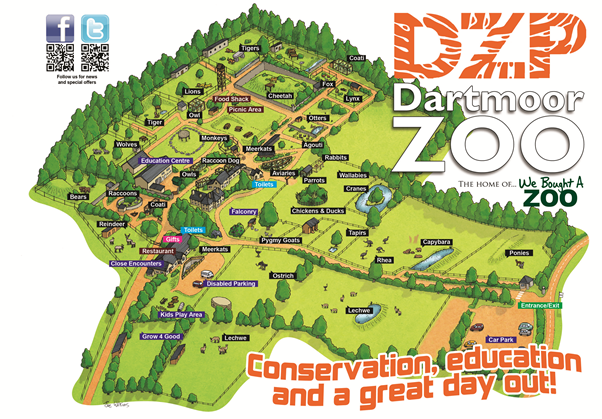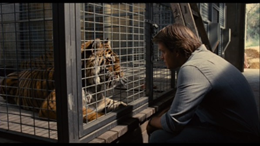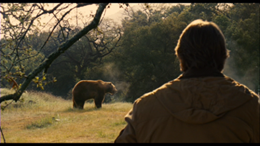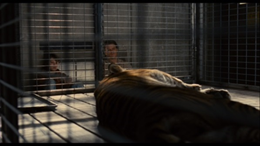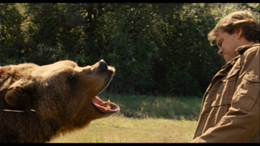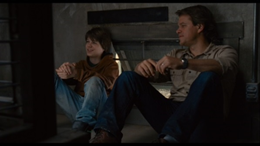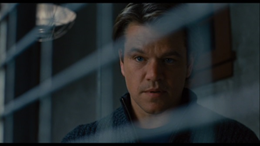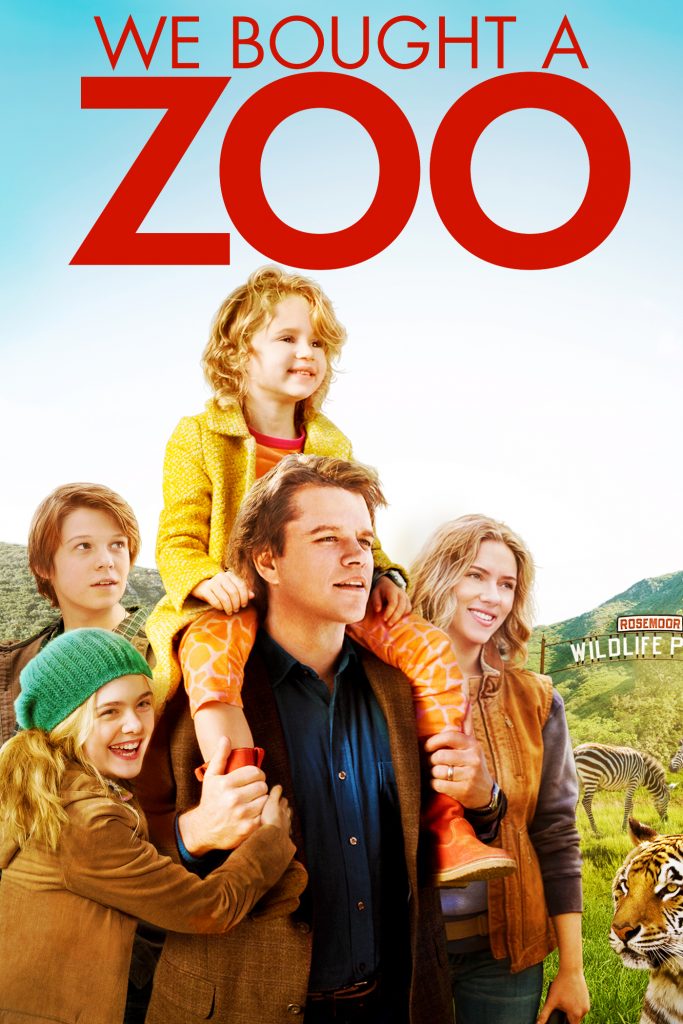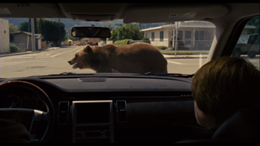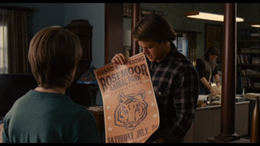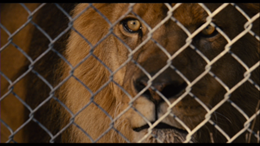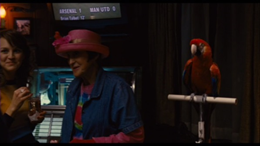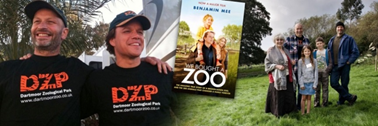We Bought a Zoo is a film loosely based on a memoir of the same name by Benjamin Mee which describes his purchase and restoration of the failing Dartmoor Wildlife Park – subsequently renamed Dartmoor Zoological Park – in preparation for its reopening. In the film, the death of Benjamin’s wife has led to a breakdown in the family unit, causing difficulties between Benjamin and his son in particular. The Mee family subsequently buys the failing Rosemoor Zoo, and the reconstruction of the zoo helps to rebuild the family bonds weakened by grief. With the impending threat of zoo inspection and the building pressure leading up to opening day, the family and zoo staff work tirelessly to create an entertaining and authentic zoo experience. The animals in this film are vehicles for better explanation of the plot; the main animals are given their own individual identities and characteristics, and their lives are closely tied in with plot developments and relationships between characters. For example, the declining health of Spar the tiger is representative of the development in the relationship between Benjamin and his son Dylan, as well as symbolising Benjamin’s own ability to move on from his wife’s death.
The film consistently addresses the issues surrounding financial instability and struggle. This echoes the actual issues faced by the real Benjamin Mee with regards to balancing the finances of the zoo, and the difficulty of acquiring the funding in order to maintain the zoo. The royalties secured by signing the rights to this Hollywood reworking of Mee’s memoir were greatly helpful in aiding the zoo’s finances, however it has now been converted to a charity after a crowdfund which took place at the end of 2014 in order to secure its future. Mee is constantly exploring new ways to raise funds for the zoo such as working as a motivational speaker, and this resourcefulness is reflected in the character of Benjamin in the film, who discovers funding for the zoo via his late wife’s expectations of his adventurousness.
Genre
This film is predominantly a family drama and the animals present are anthropomorphised, as is often the case in this genre. This can be seen when the animals appear to physically respond when verbally addressed by human characters, such as when Benjamin attempts to reason with Spar the tiger in order to encourage him to eat, and Spar responds by grunting and “chuffing”, like a defiant child. Family dramas are also typically concerned with crossing metaphorical boundaries between two extremes: right and wrong; youth and maturity; ignorance and knowledge. In this film, metaphorical and physical boundaries between humans and animals are consistently transgressed, and this represents the barrier between the domestic and the wild. Cherry suggests that ‘humans were to culture as animals were to nature’.[i] This implies that humans and animals are strictly separate. By saying that humans are resolutely civilised whilst animals are firmly uncivilised implies that the boundary between them will never be fully dissolved. However, this film explores that idea that the transgression of the boundary that separates humans from animals represents a blurring of the line between civilisation and the wild. But this concept is problematic in We Bought a Zoo, as there are animals that are consistently on the “wrong” side of the divide: the family dog, the parrot, and Crystal the capuchin who permanently accompanies Robin. Family dramas are often concerned with the maturation of the adolescent in crisis; this tradition is subverted in the film as it is the parent who faces a period of growth and development. Benjamin develops what the film regards as the “correct” relationship to animals, and he learns to respect animals individually rather than as an abstract concept that facilitate his adventurousness.
Animal Presences
The fluctuation in the health and well-being of the animals reflects the development in relationships between human characters. An example of this is when Benjamin and his son gradually reach an understanding which is facilitated by the progression of the tiger’s illness. Benjamin learns to let go of his wife’s untimely death through allowing the ailing tiger’s suffering to end voluntarily. Another instance of this is when Benjamin sees Buster the bear enjoying his brief freedom after his escape; he describes him as momentarily ‘completely free’. After this event, he decides that Buster’s enclosure must be made bigger. This forces him to recognise that his son’s unhappiness stems from his metaphorical entrapment in his own grief. They subsequently learn to communicate more effectively by allowing each other to cross and expand the boundaries of their own emotional “enclosures”. Again, this is facilitated by the recognition of how animal behaviour is not dissimilar to human behaviour, and can be transferred across the metaphorical boundary which separates “us” from “them”.
The film is also concerned with the transgression of literal boundaries between humans and animals. As I mentioned above, a select few animals are permanently allowed to cross this boundary whilst others are never permitted, and when humans transgress these boundaries they are quickly reminded that animals are potentially dangerous. I will revisit the scene where Buster escapes as an example of this; he approaches Benjamin and releases a threatening roar, reminding the viewer that these are real animals and they cannot be treated as funny, cuddly pets as they are often depicted in family films. Cherry describes how humans decide how to relate to certain species by ‘demarcat[ing] which animals they love, and which animals they love to eat’.[ii] This suggestion can be extended to this film if it is taken slightly less literally: humans decide which animals are permitted to transgress into the human sphere by deciding which ones are only to look at and which ones they are able to interact with; in other words, it is decided by what purpose certain animals serve to humans, and how offensive they are to the human existence. The dog, for example, is a domesticated household pet, easily recognised by all viewers. This type of animal does not offend; it is not dangerous, and in fact potentially protects humans against external danger. The capuchin, despite being far less common, is recognisable as a species close in appearance and behaviour to human beings and serves as a source of comedy, such as the moment when he repeatedly slaps Robin’s head. Furthermore, both of these animals are subservient to humans: the dog obeys Benjamin’s commands, and Crystal remains on Robin’s shoulders throughout the whole film and does not exceed his role as “mascot”. Therefore, both of these animals are permitted to transgress the human-animal divide because they serve a purpose and are easily controlled. This relates again to Cherry’s idea about humans representing the civilised whilst animals represent nature. This film argues against this theory by confusing the boundary between humans and animals and anthropomorphising animals to such a degree that they appear semi-civilised due to the fact that they are subject to human control.
Furthermore, this highlights the different relationships humans have with different types of animals and their positions in our culture; we physically connect with domesticated animals which are kept as pets, whereas we only observe those kept in zoos. Zoo-keeping and pet-keeping differ greatly in terms of the connections humans are able to make with the different kinds of animals. Whilst humans have authority over their pets, they do not have the same level of control over zoo animals: they are controlled with regards to the fact that humans keep them in their enclosures, however without these literal barriers – seen when Buster escapes – the zoo animals are in control due to their physical power over humans. Thus, humans must maintain the physical divide between them and zoo animals in order to maintain their authority over them.
This leads onto the fact that in this film animals are anthropomorphised: for example, when the staff are preparing for the inspection and opening day, Crystal the capuchin – who is never seen without clothes – is “helping” Rosie to paint. Similarly, when Benjamin first encounters Solomon, they seem to communicate through eye contact; the director focuses the camera closely on the lion’s eyes to imply that he is silently conversing with Benjamin. Calarco argues that ‘making a clear distinction between human beings and animals is less a matter of denotation and more a matter of performativity’.[iii] In other words, defining the differences between humans and animals is less to do with what is literally said in conversation between the two – which is largely irrelevant anyway because of the fact that animals do not speak human languages – and is more to do with how the interaction is played out. In light of this suggestion, Solomon’s interaction with Benjamin and Crystal’s “human” actions both blur the distinction between human and animal. By performing in a way which is unusual for a lion and seemingly behaving in a more “human” way by communicating, his role as a lion lies in an unexpected position on the boundary between the human and animal; he acts more “human” than other lions might and therefore partially crosses the metaphorical boundary, but is nevertheless not human enough to be allowed to physically cross into the human sphere. Crystal, on the other hand, transgresses the boundary enough that he performs essentially as an honorary human.
Summary
The most important aspects of animal representation which I have explored are: the metaphorical and literal transgression of the boundary between humans and animals; the use of anthropomorphism in order to cross these boundaries; and how animals reflect the plot and illustrate human character and relationship developments. Further examples of boundary pushing are moments such as when Solomon roars when Benjamin and Rosie first view the house; this is proleptic of how animals and humans will metaphorically transgress each other’s respective limits, in this case literally penetrating the human home. These limits are also literally pushed throughout the film; enclosures are breached, made bigger, trespassed into. Some animals are permanently permitted to transgress the boundary between human and animal, such as the parrot. However, the parrot is not anthropomorphised, rather the lady who cares from it adopts its animalistic qualities; she dresses very colourfully, mirroring its bright appearance. Whilst other animals in the film, such as Crystal the capuchin, are attributed “human” qualities, the reverse is done for the parrot and the lady and she adopts animalistic traits. This is another method by which boundaries are metaphorically experimented with in We Bought a Zoo. Animal presences are also used as tools by which relationships – particularly the relationship between Benjamin and his son – are developed. They reach an understanding through learning to transgress each other’s emotional boundaries, similarly to how animal boundaries are experimented with in the film. Whilst exploring the metaphorical and literal divides between humans and animals this film resolutely reaffirms those boundaries by deciding what kind of love different categories of animals are subjected to. Zoo animals are loved and respected from a distance whilst domesticated animals are given love through physical affection.
Connections
This film can be compared to Grizzly Man in terms of its exploration of what separates humans from animals. In Grizzly Man, Timothy Treadwell attempts to live as close to wild grizzly bears as possible, experimenting with how far he can push their limits before he transgresses too far into the animal sphere. This is similar to We Bought a Zoo in that both humans and animals cross over into each other’s literal and metaphorical territory, and in both films it is made clear that not all human-animal relationships are safe to experiment with.
We Bought a Zoo can also be compared to Madagascar; animals cross boundaries between captivity and the wild, such as when Buster escapes and is described as “free”. In We Bought a Zoo, it is briefly mentioned that Buster is at home outside of his enclosure and free from captivity. In Madagascar, this is the central theme of the film and whilst the zoo animals are outside of their comfort zone in the wild, it is apparent that they are “destined” to be in the wild and free from their enclosures.
Further Reading
We Bought a Zoo. Dir. Cameron Crowe. 20th Century Fox, 2011
Grizzly Man. Dir. Werner Herzog. Lions Gate Films, 2005
Madagascar. Dir. Eric Darnell and Tom McGrath. DreamWorks Distribution, 2005 https://www.dartmoorzoo.org.uk/home/about_us
Burt, Jonathan, Animals in Film, (London: Reaktion Books Ltd., 2002)
Calarco, Matthew, ‘Boundary Issues: Human-Animal Relationships in Karen Joy Fowler’s We Are All Completely Beside Ourselves’, Modern Fiction Studies, 60.3 (2014), 616-635
Cherry, Elizabeth, ‘Shifting Symbolic Boundaries: Cultural Strategies of the Animal Rights Movement’, Sociological Forum, 25.3 (2010), 450-475
Morriss, Peter, ‘Blurred Boundaries + Human/Animal-Hybrids, Ideas of Incest, and Cultural Taboos in Britain’, Inquiry – An Interdisciplinary Journal Of Philosophy, 40.3 (1997), 259-290
Elizabeth Cherry, ‘Shifting Symbolic Boundaries: Cultural Strategies of the Animal Rights Movement’, Sociological Forum, 25.3 (2010), 450-475 (p. 458).
Ibid (p. 454).
Matthew Calarco, ‘Boundary Issues: Human-Animal Relationships in Karen Joy Fowler’s We Are All Completely Beside Ourselves’, Modern Fiction Studies, 60.3 (2014), 616-635 (p. 624).
